Uncategorized
MJ Bermudez: Beating the odds with work, Schreiber therapy
February 4, 2021MJ Bermudez was in the middle of an aquatic therapy session with Schreiber PT Laurie Panther when a photographer started snapping his picture.
Right away, a big smile spread across MJ’s face. This is somebody who likes having his picture taken.

“He doesn’t speak, but he understands everything,” says his mother, Sharon Petrosky. “He has lots of personality. He’s smart, with a great sense of humor.”
When Sharon talks about MJ, when she lists all the things he’s able to do, she says God is the only explanation for so much of it.
Yes, she has had amazing doctors since he was born 7 years ago. And, yes, the therapists that have worked with MJ, at Schreiber and at Nemours/Alfred I. duPont Hospital for Children in Wilmington, Del., have done remarkable work.
But when she first learned of his complication during her pregnancy, she could not have imagined then where he would be today.
“The doctors we saw at the very beginning thought he would be blind, that he would be intellectually impaired, that he wouldn’t grow properly,” Sharon says. “None of that has happened. Nobody can really explain why, but he has exceeded every prognosis we’ve ever been given.”
A difficult diagnosis
While Sharon was still pregnant with MJ, doctors noticed the baby’s brain wasn’t developing correctly. The official diagnosis was septo optic dysplasia, a kind of cerebral palsy. It’s a disorder of early brain development that is generally associated with three features: underdevelopment of the optic nerves; abnormal formation of structures along the midline of the brain; and growth hormone deficiency.
Sharon didn’t really know what to expect when MJ was born, but she knew it wouldn’t be easy.
The blindness, growth issues and intellectual impairment didn’t happen. But he does have difficulty walking because of the way his legs have developed. And he can’t speak because of muscular issues related to his jaw structure.
“He can say about 11 words,” Sharon says. “But he can communicate. If somebody has a question about him, I’ll say: ‘Ask him. He can tell you.'”
Her focus has been helping him walk and talk. The efforts to help him walk include a remarkable procedure performed last summer at Nemours/duPont. They saw Dr. Jason Howard, an internationally recognized specialist in cerebral palsy, with particular expertise in hip displacement.
Sharon said MJ had developed an unusual way of walking because of the way his leg bones and muscles had formed, and his muscles were literally pulling his hip out of joint, which ended up slowly grinding his hip sockets.
She said Dr. Howard took one look at the X-rays and immediately saw a looming problem.
“He said within six months the damage would be irreversible,” she said. “He wanted to do surgery as soon as possible.”
The surgery on July 22 was one of those “how do they do that” miracles of modern science: four surgeons, seven hours, 14 different procedures. It involved cutting through his femurs, pulling the ball out of each socket, detaching and reattaching some muscles to have them pull correctly on his hips, and then putting in some hardware to keep everything in place during healing.
“I’ve been doing this 10 years, I’ve never had a kid recover like this from this surgery. He just blew everybody out of the water.”
Laurie Panther, Schreiber physical therapist
“We were at Nemours for more than two months; it’s a phenomenal place,” Sharon said. “We literally lived there. He had different therapies four times a day. They had a classroom for him for school. And then when it was time to come home, they set us up with outpatient therapy here at Schreiber.”
That started around September. He comes for physical therapy twice a week to continue rehabbing those hips, and he also receives occupational therapy (twice a week) and speech-language pathology (once a week). All together, he’s usually at Schreiber three days a week. Plus, he receives all three therapies at school through IU13.
“The doctor said MJ is 12-18 months ahead of the average schedule post-surgery,” Sharon says. “We have once last surgery this July to remove the hardware in his hips. But he is fully healed.”
Progress at Schreiber
Laurie Panther, the PT who has worked with him the most, said his mobility was pretty limited when he started at Schreiber.
“He was not walking,” Laurie said. “He was using a wheelchair as his primary means of mobility. He could use a walker for short distances. He couldn’t get up off the floor.”
That’s all typical after the kind of complex surgery MJ had. Laurie said the typical post-surgery recovery for a kiddo with CP to get back to their pre-surgery status is 1-2 years. Mark is there after just seven months.
“He’s actually an enigma,” she said. “I’ve been doing this 10 years, I’ve never had a kid recover like this from this surgery. He just blew everybody out of the water. He’s doing everything he was doing before the surgery, with better alignment, which was the point of his surgery.”
10 more calming strategies to reduce anxiety
July 16, 2020By Missy Ressler

Here is our sixth and final post in Schreiber’s series on The Many Faces of Anxiety. Today focuses on a few additional calming strategies. Please share some of your family’s calming strategies in the comments below. We are all in this together, and your strategies will help someone else.
Here’s the list of all the posts:
Post 1:What is Worry
Post 2:How the Autonomic Nervous System works
Post 3:How worry affects our bodies
Post 4: A little spot of anxiety
Post 5: How worry affects our thinking
Post 6: 10 more calming strategies
Here are 10 more strategies to use to help calm the mind so you can think clearly and the use the strategies discussed in previous posts.
- Identify the size of the problem and expected reaction. Most problems are little and we need to have a little reaction. A lot of times we have a big reactions to small problems. First, identify if the problem is little or big and what an expected reaction would be. Little problems are things we can solve ourselves or quickly with an adult’s help. It is expected we stay calm. A big problem affects many people, and it takes a lot of people or a long time to solve it. It would be expected to be upset, but we still need to stay calm so our brain can solve the problem.
- Progressive muscle relaxation/squish and relax. Start with your toes and work your way up to your head by squeezing one body part at a time for 3 seconds then relaxing it.
- Adult coloring books, mandalas or any coloring activity.
- Relaxing music.
- Yoga. Check out cosmickids.com The site also has a lot of mindfulness activities.
- Play with your pet.
- Guided relaxation. Think about your favorite place, and use podcasts and guided relaxation scripts for kids that you can find online.
- Use ‘I statements’ to express how you feel and what you want. “I feel sad when I can’t see my friends. I would like to Zoom with them.”
- Calming bottle. Fill an empty water bottle ½ to ¾ full with water. Add beads, glitter glue, glitter, food coloring, shells, little bit of oil, or anything that would fit into the bottle and survive in water. Use plastic craft glue or duct tape to secure the lid so water does not leak out. Shake the bottle and take deep breaths while watching all the items float around. Our mind and body should calm just like the items in the bottle.
- The Dear Anxiety podcast. I highly recommend this. You can find it here. It is great for parents and kids.
Please share your child’s coping skills in the comments below.
Missy Ressler is behavioral health program supervisor at the Schreiber Center for Pediatric Development.
Family’s connection to Schreiber grows with Rubber Duckie Race
July 15, 2020Logan and Nicholas Campbell are almost-6-year-old twin boys with twin obsessions: lawn mowers and Schreiber’s Duckie.
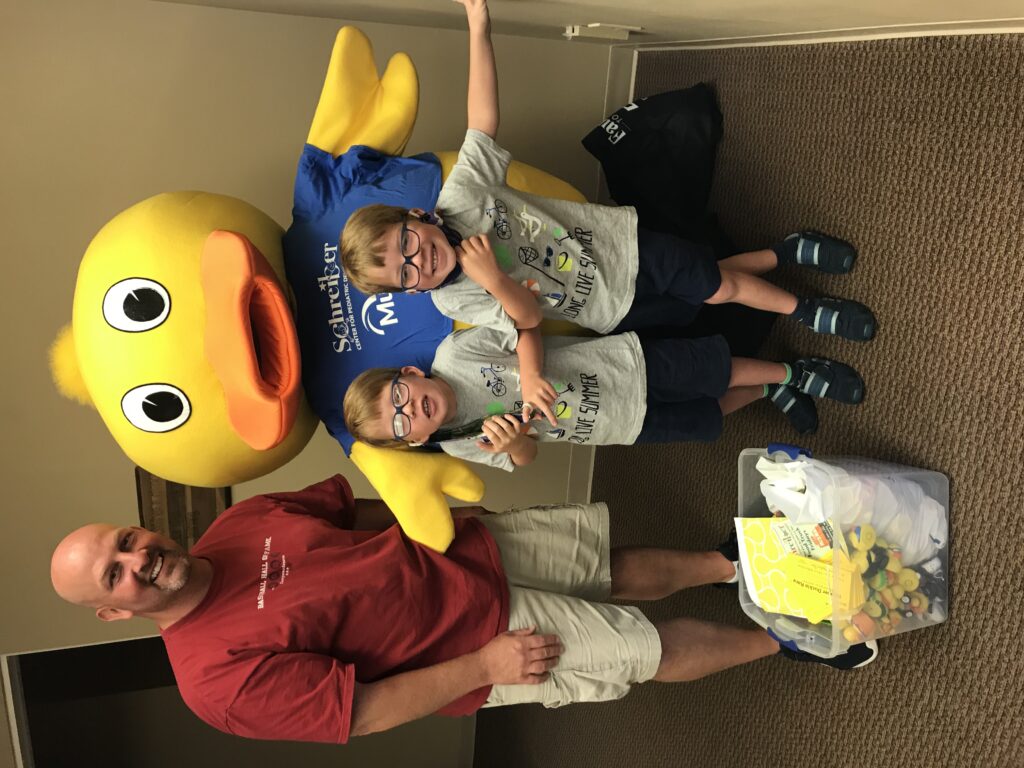
The boys were in all their glory this week when they stopped in with dad Nathan Campbell, who was picking up tickets to sell for Schreiber’s annual Rubber Duckie Race.
The iconic inflatable Duckie was standing tall outside, and a mowing team was navigating around the Duckie and the Schreiber building with thousands of Duckies inside.
“They love seeing the Duckie,” Nathan said.
The Campbells drive 45 minutes from their home in Camp Hill to Schreiber every week for services. Logan was born with a mild form of cerebral palsy and receives physical therapy and speech-language therapy. Nicholas was born with some developmental delays and comes for PT and OT. They’ve been making the trek to Schreiber for about two years.
“There’s nothing like Schreiber up around us, which is unfortunate, so we’re happy to make the drive,” Nathan said. “We love it here.”
There’s nothing like Schreiber up around us, which is unfortunate, so we’re happy to make the drive. We love it here.
Nathan Campbell
Nathan was picking up 210 Duckies for tickets he and his wife Lauren have already sold to friends and neighbors in Camp Hill.
“They don’t know anything about Schreiber, but they know the boys and want to want to support us,” Nathan said. “My wife put up a Facebook post the other day, and people have been buying them like crazy.”
While their dad answered questions, Logan and Nicholas kept an eye on the big Duckie and the mowers. Then they posed for a quick photo with our new Duckie mascot before heading out the door, on their way back to Camp Hill to sell more Duckies for Schreiber.
Become a Duckie seller
The more Duckie sellers we have, the more Duckies we sell and the more money we raise. And every Duckie dollar is doubled by a matching grant from the Stabler Foundation. Want to join the team? Contact Erica Croce at 717-393-0425 ext. 105 or ecroce@schreiberpediatric.org. Or fill out the online form here.
How worry affects our thinking
July 14, 2020by Missy Ressler

In the fifth post in our series of anxiety, Schreiber’s Behavioral Health therapists share strategies for when your child forms worry links and asks “what if” questions. In order to help families who are struggling with scary emotions over wearing masks or seeing people in masks, please share a picture of your family wearing masks. You can learn other tips for coping with masks here.
Here’s the list of all the posts:
Post 1:What is Worry
Post 2:How the Autonomic Nervous System works
Post 3:How worry affects our bodies
Post 4: ‘A Little Spot of Anxiety’
Post 5: How worry affects our thinking
Post 6: Other calming strategies
Missy Ressler is the Behavioral Health program supervisor at Schreiber.
‘A Little Spot of Anxiety’
July 9, 2020By Kaity Sollenberger

Today in Post 4 in our series on anxiety Schreiber Behavioral Health therapists suggest a book to read with your child.
Here’s the list of all the posts:
Post 1: What is Worry
Post 2: How the Autonomic Nervous System works
Post 3: How worry affects our bodies
Post 4: A little spot of anxiety
Post 5: How worry affects our thinking
Post 6: Other calming strategies
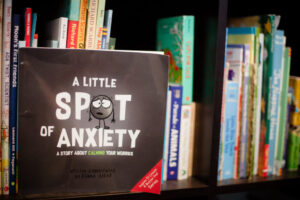
Anxiety can be a hard emotion for children and adults to understand because it is considered a complex emotion. Anxiety can be a mix of many different emotions, including worry, nervousness, fear and sadness, to name just a few. The interesting thing about anxiety is that is can also protect you. Feeling anxiety can be healthy in small doses, but when anxiety gets too big it can be really hard to understand and manage. “A Little Spot of Anxiety,” by Diane Alber, is a great book geared toward school-aged children that explains what anxiety is and how is can affect your body sensations. This book also suggests different activities and strategies in order to help manage your anxiety.
Remember, children need to be coached and guided through regulation of all emotion, including anxiety. This is called co-regulation. In other words, model how to appropriately regulate through your anxiety. First and foremost, make sure you are regulated, then you can help to co-regulate your child. Our goal is to regulate the child, relate to how they are feeling, and then instruct and teach.
Here is a YouTube link to watch a reading of the book.
Kaity Sollenberger is a behavioral health therapist at Schreiber.
How worry affects our bodies
July 7, 2020By Missy Ressler

Today’s video post in our series about anxiety will explain how stress and anxiety affect our bodies and offer some tips on how to slow or stop the worry cycle.
Here’s the list of all the posts:
Post 1: What is Worry
Post 2: How the Autonomic Nervous System works
Post 3: How worry affects our bodies
Post 4: A little spot of anxiety
Post 5: How worry affects our thinking
Post 6: Other calming strategies
Printable downloads
Missy Ressler is the behavioral health program supervisor at Schreiber.
Post 2: How the Autonomic Nervous System works
July 2, 2020By Kaity Sollenberger

This is the second in a six-part series of posts about anxiety, presented by Schreiber’s behavioral health therapists. Today, we take a look at the brain and the Autonomic Nervous System.
Here’s the list of all the posts:
Post 1: What is Worry
Post 2: How the Autonomic Nervous System works
Post 3: How worry affects our body
Post 4: A little spot of anxiety
Post 5: How worry affects our thinking
Post 6: Other calming strategies
The last few months have been full of unknowns, unexpected changes, uncertainties and fear for both adults and children alike. These circumstances can wreak havoc on our bodies, specifically our Autonomic Nervous System (ANS), which can lead to an increase of challenging behaviors. The Autonomic Nervous System is a part of our brain and body that controls reactions when it believes the body is in danger. If our brain perceives a threat, it will begin to prepare our body for action – our fight, flight or freeze responses.
There are three major branches to the ANS: the Ventral Vagal branch, Sympathetic branch and the Dorsal Vagal branch. The Ventral branch serves as the social engagement system, meaning you feel calm, controlled, safe and socially engaged. The Sympathetic system controls fight or flight and prepares the body to respond to a perceived threat. In this branch, behaviors will begin to increase and the person will become agitated, frantic and possibly aggressive. The Dorsal Vagal branch is our freeze response. The body will begin to feel numb and heavy. The person will have little motivation or a desire to participate in activities.
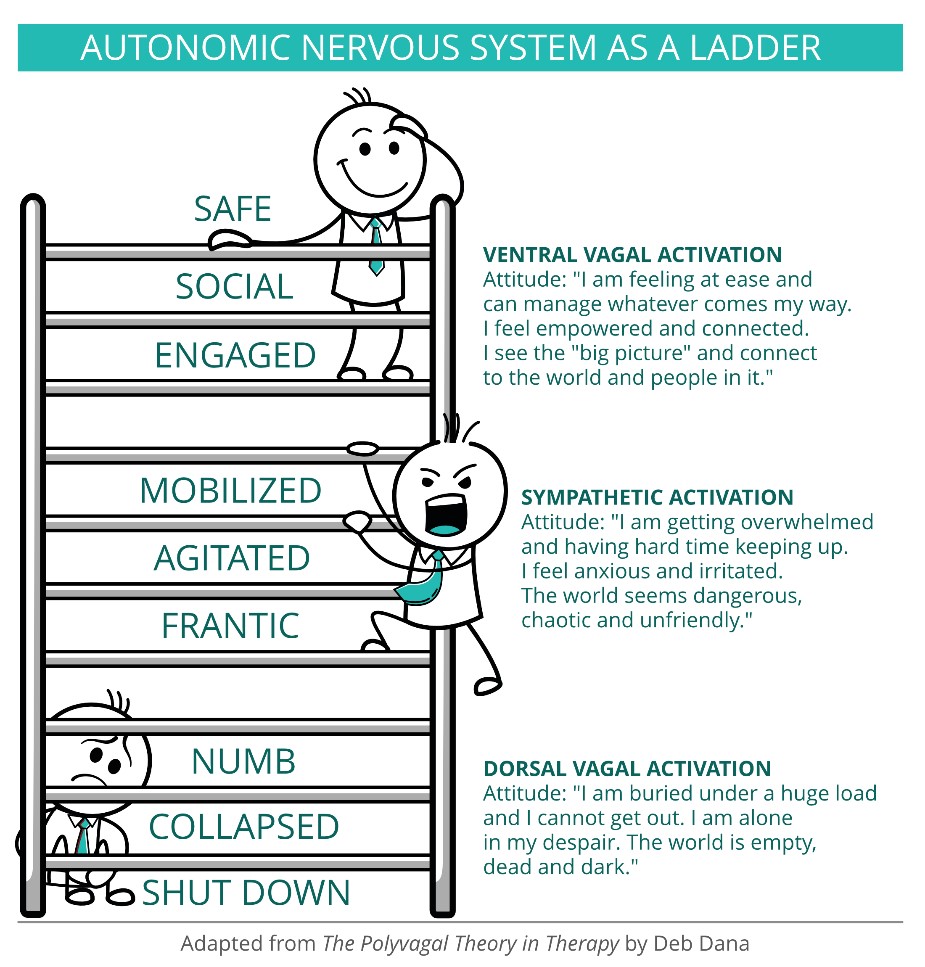
Think of these three branches as a kind of ladder. The Ventral Vagal branch would be at the top, the Sympathetic branch would be in the middle and the Dorsal Vagal branch is at the bottom. We go up and down this ladder throughout the day. We want to stay more toward the top instead of the middle or the bottom.
Due to all of the changes, uncertainties and fears our bodies are most likely in the Sympathetic branch right now. But good news – there are ways to regulate your Autonomic Nervous System and help move up the ladder to the Ventral Vagal branch!
Some regulation suggestions for children include taking slow, deep breaths; giving them something to chew on, suck on or crunch on; making sure they’re not hungry or tired; helping them with muscle relaxation; reducing noise and dimming the lights. Click on this link for other ideas.
Remember, children need to be coached and guided through regulation. This is called co-regulation. In other words, model how to appropriately regulate through your emotional responses. First and foremost, make sure you are regulated, then you can help to co-regulate your child. Our goal is to regulate the child, relate to how they are feeling, and then instruct and teach.
Kaity Sollenberger is a behavioral therapist at Schreiber.
Part 1: What is Worry
June 30, 2020By Missy Ressler

COVID-19 has created a lot of new stress for children and families. Schreiber’s Behavioral Health therapists wanted to provide some resources to help you navigate the daily challenges. We’re launching this series of blog posts on the topic of anxiety. We will publish two a week for the next three weeks. Today, the first post is a video called What is Worry.
Here’s the list of all the posts:
Post 1: What is Worry
Post 2: How the Autonomic Nervous System works
Post 3: How worry affects our body
Post 4: A little spot of anxiety
Post 5: How worry affects our thinking
Post 6: Other calming strategies
Additional resources
The following are links to social stories that could help children better understand and worry less about COVID-19.
- COVID King
- Someday
- My Name is Coronavirus
- Feeling Anxious and Worried
- Why We Stay Home
- Talking With Children about Coronavirus (CDC)
- You can also Google ‘Coronavirus story for kids’ or ‘coronavirus social story for kids’ for mores stories and information.
Missy Ressler is the Behavioral Health program supervisor at Schreiber.
A Schreiber update from James DeBord
June 4, 2020Schreiber carries on 10 weeks into the COVID-19 pandemic

It’s hard to believe it’s been 10 weeks since Schreiber faced the most challenging period in our 84-year history. Thanks to so many of you, our generous supporters, we have been able to weather this difficult phase of an unprecedented public health crisis.
Here’s where we stand as of the first week of June.
The good news
Beginning telehealth services in April allowed us to bring in some revenue from therapy programs in April and May. While providing those services helped, we could only treat a fraction of the kiddos we would normally see.
In-person visits resumed in May, and those have helped, too. Again, though, because of social distancing and the need to thoroughly clean and sterilize surfaces and equipment between every individual session, we will only be able to see two kids per department per hour. Normally, we would see 10-15 kids per hour in the center, depending on the time of day.
We were able to receive Paycheck Protection Program funds that we will use to pay all of our staff for 2.5 months, which takes us into July (the clock on this began ticking when we received the funds in early May).**
** In early June, Congress was set to pass a reform measure that would modify the terms of the program to help small businesses.
We have raised more than $500,000 since mid-March. That includes more than $100,000 from our Phonathon, a record for us, and close to $30,000 from the online version of our Gala auction. The Clark Associates Charitable Foundation also made their expected donation of Derby Day proceeds, even though the foundation’s annual fundraising event was canceled. It was the latest example of the way this community responds when we put out a call for help.
Circle of Friends Academy will re-open June 8, allowing us to resume our Keystone Stars 4 Stars-level child care services.
All of our usual summer camps were postponed, but we will offer an alternative version of summer fun, a Virtual Camp Schreiber that will run four days a week for seven weeks starting June 22.
We kept furloughs to a minimum and have plans in place to bring all staff back by June 30.
Now, the tougher news
The outlook beyond July and August remains uncertain and filled with more challenges.
We don’t know yet what preschool services will look like and what limitations we will have when the traditional school calendar starts in September.
We don’t know how long insurance will continue to pay for telehealth services. That was a temporary adjustment the insurers made at the start of the pandemic.
The number of kids we’re able to see right now will not support our current level of full staffing. Even as we bring more staff back this month, we will still have to limit the number of kids we see each hour in each department.
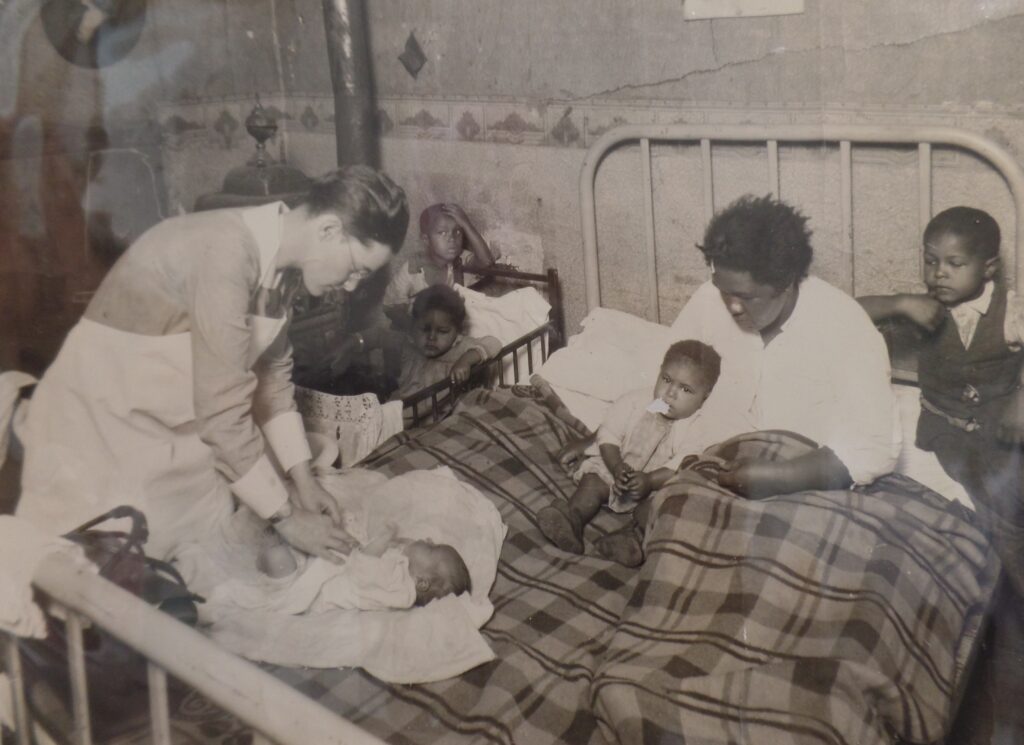
In-person fundraising remains uncertain, and we are making changes to our fundraising events as we speak, starting with our Rubber Duckie Race. Watch for a big announcement about that coming June 15.
So that’s where we are. Like so many other for-profit businesses and nonprofit organizations, we have a difficult path ahead of us. I wanted all of you to know that all of us here at Schreiber, from the management team and the board to every one of our dedicated employees, will do everything possible to make sure Schreiber will be here for many more years so that we can continue the work Edna Schreiber started in 1936.
Schreiber resumes in-person therapy visits
May 18, 2020In some ways, the process at Schreiber on Wednesday seemed familiar. Kelly Grant stopped at the makeshift front desk, her son Keegan propped on her hip. She chatted with Lisa Moore while checking in, then headed back with Schreiber therapist Libby Crockart for a physical therapy session. Donna Nelson came with her granddaughter Violet Styer to do speech therapy with Abby Zell.
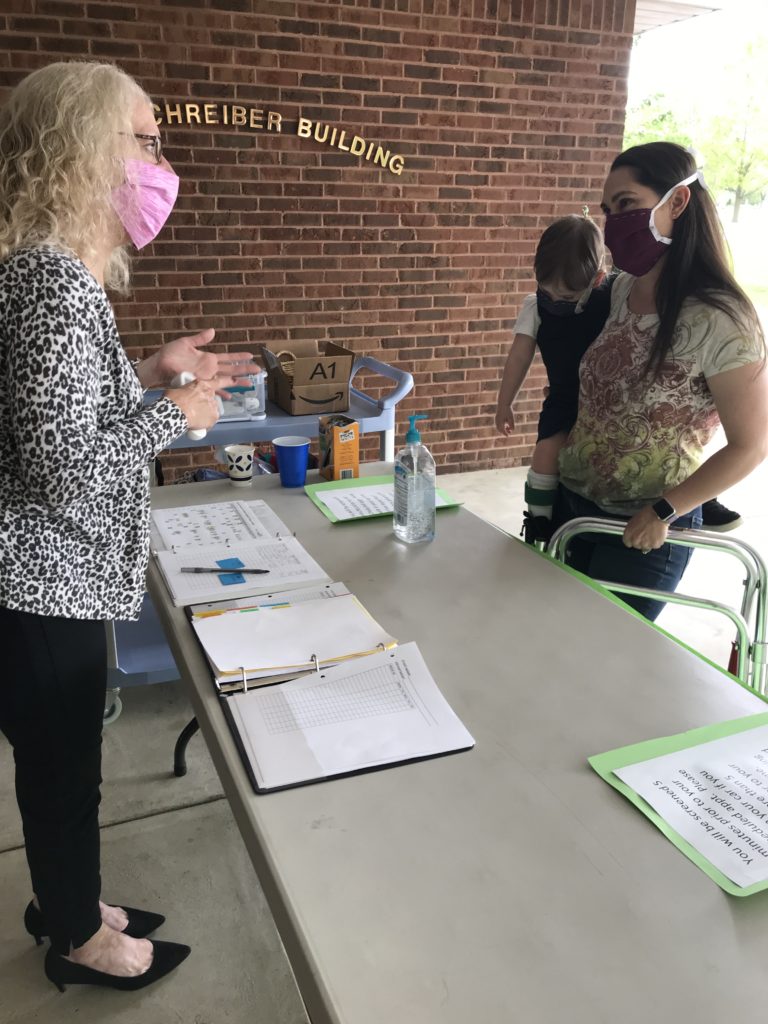
Even with these pieces of familiar routine, it still felt strange. Kelly and Keegan had masks covering their faces. Miss Lisa was at a screening station under the portico at the front entrance. She scanned everybody coming into the center. Violet at first refused to try on a mask (Sound familiar? We have some tips here.), then smiled happily when she found one with lots of bright colors.
It was the first day of in-person therapy sessions at Schreiber since March 17, and, strange or not, it felt pretty good.
Keegan is 2 years old. He was born with spina bifida, and he has been coming to Schreiber since November 2019. Miss Libby had him stand next to a therapy table and play with some cars. Keegan would have to put the cars at the top of a small downhill track, slide-step across to retrieve them, then slide-step back to put them at the top again. Later, she helped him stand in his walker and kicked a soccer ball with him as he walked.
“When he first came, he wasn’t crawling — just scooting,” Kelly said. “Now, he’s crawling and scooting and using his walker.”
Schreiber therapists have been able to do telehealth sessions via a computer or tablet for some of our families. But doing telehealth with Keegan would have been difficult. Miss Libby was hands-on with positioning Keegan at the table or in his walker. She watched carefully as he moved to see how his legs moved when he tried to stand or walk.
The session ended after 30 minutes so there would be time for Schreiber staff to clean all the equipment used during the session.
In the speech-language pathology offices, Miss Abby worked with Violet, age 7, on an activity to help her practice using words. Violet happily engaged, although her mask kept slipping off her ears, which she thought was really funny.
“Oh, no, what happened?” Abby said. “My mask fell off again,” Violet said, a big smile on her face.
Violet has Down syndrome, and she had been coming to Schreiber for speech, PT and occupational therapy for several years, Donna said. All of her work with Schreiber stopped when COVID-19 hit.
“She’s not comfortable on the computer, so we really haven’t done any therapy since March,” Donna said, watching Violet and Miss Abby work. “She’s excited to come. She’s been coming here since she was 3. She was here for preschool. We credit speech with how far she’s come. She didn’t say anything when she was 3. She’s doing really well now speaking in full sentences.”
Violet and Keegan were among the first kids back in the building for therapy. The work to help them in this strange but familiar world will still happen, it just might be a little more complicated.